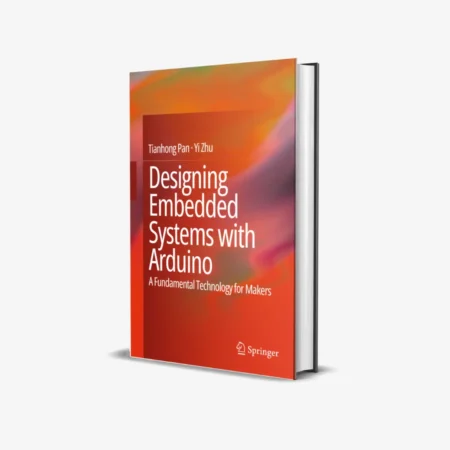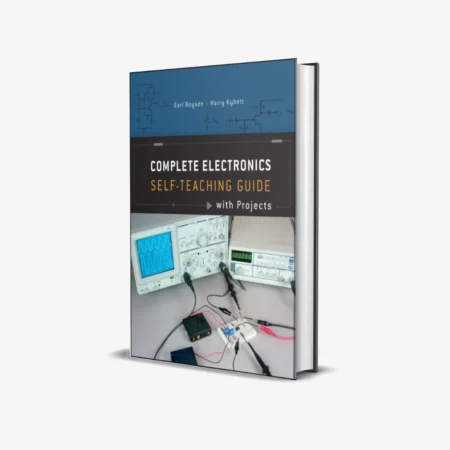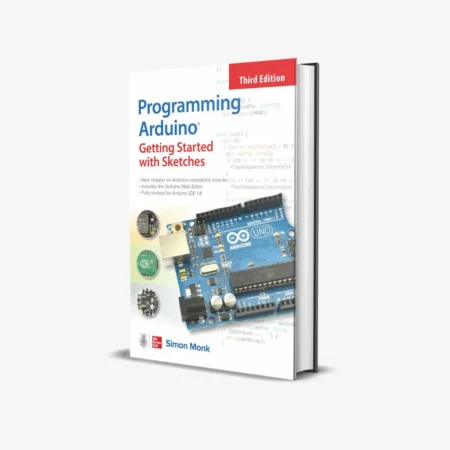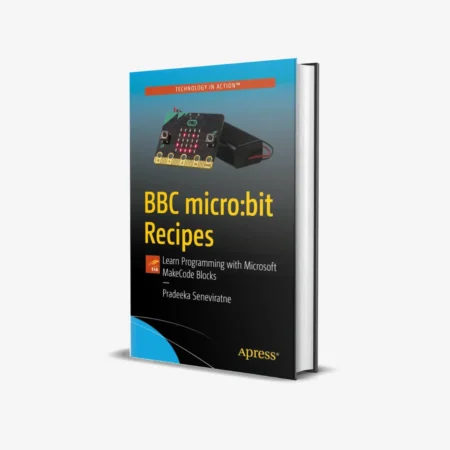Description
Download Top 6 ESP32 eBooks for $20

eBook 1:
Developing IoT Projects with ESP32: Unlock the full Potential of ESP32 in IoT development to create production-grade smart devices (2nd ed)

eBook 2:
Electronics Projects with the ESP8266 and ESP32: Building Web Pages, Applications, and WiFi Enabled Devices (1 ed)

Discover the powerful ESP8266 and ESP32 microcontrollers and their Wi-Fi communication. The ESP32 microcontroller features Bluetooth and BLE communication in addition to Wi-Fi. The book emphasizes practical projects, and readers are guided through Wi-Fi and Bluetooth communication, mobile app design and build, ESP-NOW and LoRa communication, and signal generation.
Projects throughout the book utilize the Wi-Fi functionality and processing power of the ESP microcontrollers. Projects are built in the Arduino IDE, so you don't need to download other programming software. Mobile apps are now ubiquitous, making the app-building projects in the book very relevant, as are the web page design projects.
In Electronics Projects with the ESP8266 and ESP32, you'll see how easy and practical it is to access information over the internet, develop web pages, build mobile apps to remotely control devices with speech recognition, or incorporate Google Maps into a GPS route tracking app.
You will
- Build practical electronics projects with an ESP8266 or ESP32 microcontroller with Wi-Fi communication.
- Use the Wi-Fi function of the ESP8266 and ESP32 to update web pages.
- Communicate with your mobile phone or smartwatch using Bluetooth Low Energy.
- Transmit and receive information to control remote devices over the internet.
- Understand the design and build of mobile apps for internet-based applications.
- Apply your computer programming skills in C++, JavaScript, AJAX, and JSON.
- Use WebSocket, MQTT brokers, and IFTTT for fast two-way communication with webpages.
eBook 3:
Programming with Node-RED: Design IoT Projects with Raspberry Pi, Arduino, and ESP32

The Internet of Things (IoT) is becoming a major application area for embedded systems. As a result, more and more people are becoming interested in learning about embedded design and programming. Technical colleges and universities are moving away from legacy 8 and 16-bit microcontrollers and are introducing 32-bit embedded microcontrollers to their curricula. Many IoT applications demand precision, high processing power, and low power consumption.
Produced by IBM, Node-RED is an open-source visual editor for wiring the Internet of Things. Node-RED comes with a large number of nodes to handle a multitude of tasks. The required nodes are selected and joined together to perform a particular task. Node-RED is based on flow-type programming, where nodes are configured and joined together to form an application program. There are nodes for performing complex tasks, including web access, Twitter, email, HTTP, Bluetooth, MQTT, controlling GPIO ports, etc. One particularly nice aspect of Node-RED is that the programmer does not need to learn how to write complex programs. For example, an email can be sent by simply joining nodes together and writing only a few lines of code.
This book aims to teach how to use Node-RED in projects. The main hardware platform used with most of the projects in this book is the Raspberry Pi 4. Chapters are included to show how Node-RED can also be used with Arduino Uno, ESP32 DevKitC, and the ESP8266 NodeMCU microcontroller development boards.
eBook 4:
Develop your own custom home automation devices

Espressif's ESP8266 and ESP32 microcontrollers have brought DIY home automation to the masses. However, not everyone is fluent in programming these microcontrollers with Espressif's C/C++ SDK, the Arduino core, or MicroPython. This is where ESPHome comes into its own: with this project, you don’t program your microcontroller but configure it.
This book demonstrates how to create your own home automation devices with ESPHome on an ESP32 microcontroller board. You’ll learn how to combine all kinds of electronic components and automate complex behaviours. Your devices can work completely autonomously and connect over Wi-Fi to your home automation gateways, such as Home Assistant or an MQTT broker.
By the end of this book, you will be able to create your own custom home automation devices the way you want. Thanks to ESPHome and the ESP32, this is within everyone’s grasp.
- Set up an ESPHome development environment and create maintainable configurations
- Use buttons and LEDs
- Sound a buzzer and play melodies
- Read measurements from various types of sensors
- Communicate over a short distance with NFC, infrared light, and Bluetooth Low Energy
- Show information on various types of displays
eBook 5:
FreeRTOS for ESP32-Arduino: Practical Multitasking Fundamentals

Programming embedded systems is difficult because of resource constraints and limited debugging facilities. Why develop your own real-time operating system (RTOS) as well as your application when the proven FreeRTOS software is freely available? Why not start with a validated foundation?
Every software developer knows that you must divide a difficult problem into smaller ones to conquer it. Using separate preemptive tasks and FreeRTOS communication mechanisms, a clean separation of functions is achieved within the entire application. This results in safe and maintainable designs.
Practicing engineers and students alike can use this book and the ESP32 Arduino environment to wade into FreeRTOS concepts at a comfortable pace. The well-organized text enables you to master each concept before starting the next chapter. Practical breadboard experiments and schematics are included to bring the lessons home. Experience is the best teacher.
Each chapter includes exercises to test your knowledge. The coverage of the FreeRTOS Application Programming Interface (API) is complete for the ESP32 Arduino environment. You can apply what you learn to other FreeRTOS environments, including Espressif’s ESP-IDF. The source code is available on GitHub. All of these resources put you in the driver’s seat when it is time to develop your next uber-cool ESP32 project.
What you will learn:
- How preemptive scheduling works within FreeRTOS
- The Arduino startup “loopTask”
- Message queues
- FreeRTOS timers and the IDLE task
- The semaphore, mutex, and their differences
- The mailbox and its application
- Real-time task priorities and their effect
- Interrupt interaction and use with FreeRTOS.
- Queue sets
- Notifying tasks with events
- Event groups
- Critical sections
- Task local storage
- The gatekeeper's task
eBook 6:
Practical Audio DSP Projects with the ESP32: Easy and Affordable Digital Signal Processing

This book aims to teach the basic principles of Digital Signal Processing (DSP) and introduce it practically using the bare minimum of mathematics. Only the basic level of discrete-time systems theory is given, sufficient to implement DSP applications in real-time. The practical implementations are described in real-time using the highly popular ESP32 DevKitC microcontroller development board. With the low-cost and extremely popular ESP32 microcontroller, you should be able to design elementary DSP projects with sampling frequencies within the audio range. All programming uses the popular Arduino IDE in conjunction with the C language compiler.
After laying a solid foundation of DSP theory and pertinent discussions on the main DSP software tools on the market, the book presents the following audio-based sound and DSP projects:
- Using an I²S-based digital microphone to capture audio sound
- Using an I²S-based class-D audio amplifier and speaker
- Playing MP3 music stored on an SD card through an I²S-based amplifier and speaker
- Playing MP3 music files stored in ESP32 flash memory through an I²S-based amplifier and speaker
- Mono and stereo Internet radio with I²S-based amplifiers and speakers
- Text-to-speech output with an I²S-based amplifier and speaker
- Using the volume control in I²S-based amplifier and speaker systems
- A speaking event counter with an I²S-based amplifier and speaker
- An adjustable sine wave generator with an I²S-based amplifier and speaker
- Using the Pmod I²S2 24-bit fast ADC/DAC module
- Digital low-pass and band-pass real-time FIR filter design with external and internal A/D and D/A conversion
- Digital low-pass and band-pass real-time IIR filter design with external and internal A/D and D/A conversion
- Fast Fourier Transforms (FFT)












Reviews
There are no reviews yet.